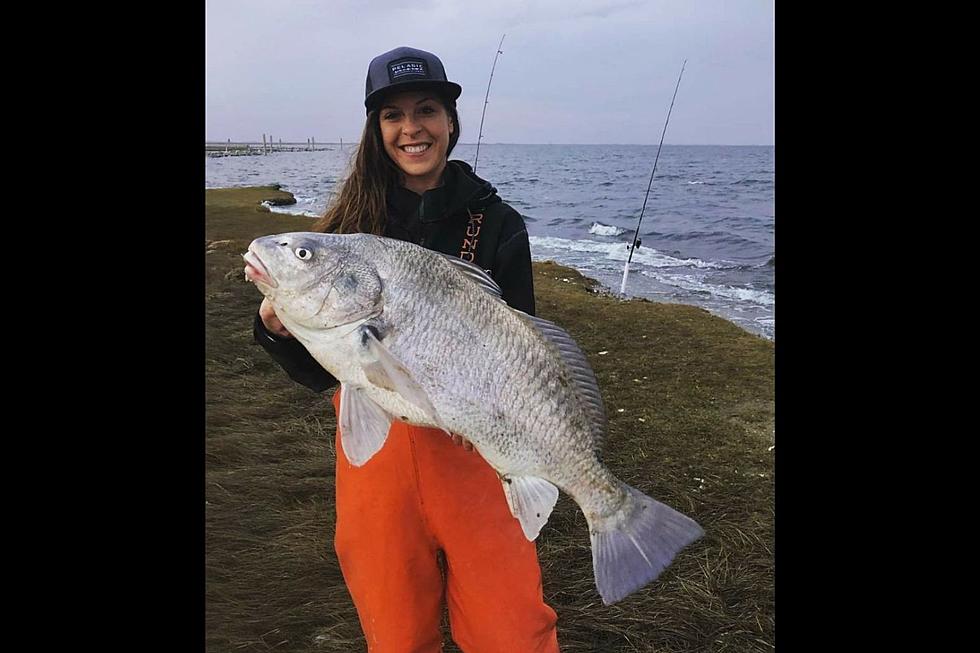
Great Egrets Tell All: It’s Time to Go Fishing in South Jersey
And crabbing, for that matter.
Okay, so it goes back to the mid-Sixties and a kid always running around with a fishing rod and rusted tackle box or, when vising relatives “down the shore”, a drop line or two and a long handle net, or a crab trap, and the omnipresent fishing rod and rusted tackle box.
It was a crusty old timer, with three rods resting in forked sticks jammed in the mud, who pointed a tall white bird standing in the shallows of that urban park pond, staring intently at the water.

“When that bird show up, the fish start to bite,” he predicted. It was late April, the trees and bushes were beginning to green, and it was warm enough to shed the Yoohoo-stained jacket.
As if on cue, the fish started biting. A dozen sunfish, all of three to five-inches, and then a seven inch bullhead ate the pieces of garden worm during the next hour. Then, wonder of wonders, a nine-inch rainbow trout, stocked the week previous, pulled the bobber under and was soon flopping on the bank. The ultimate city pond catch!
The white bird had moved a couple of yards, intent on spearing and swallowing more minnows and sunnies.
Several weeks later in Bayville, with a couple of crab traps and drop lines, and a net on an uncle’s lagoon dock, I looked across at a vacant lot and there, like a statue in the shallows, stood another of those lanky white birds, eyeballing the water and making stabs at what I figured were killies (minnies). While the adults, who were readying for the obligatory poker game and vino guzzling, advised that it was too early to catch crabs, the traps went in, as did the lines, all baited with bunker that I had hiked nearly a mile round trip to purchase at a marina named Whitey’s on Butler Boulevard.
A couple of hours later, a half-dozen “keeper” blueclaws sat on the bottom of the tattered bushel basket, and they could not have tasted sweeter than if prepared by a chef on Chesapeake Bay.
Does the springtime return of the great egrets to breed have anything to do with the fishing lighting? Who knows. Seasonal coincidence. The same could be said for the arrival of the laughing gulls and the ibis. All I know is, it worked, and still does, on occasion, for yours truly. One early, hazy glare-riddled May morning, with the sky and water the color of melting metal, an egret winged off, legs dangling behind, a foot or so above the mirrored surface as I approached the ICW behind Ocean City. It landed perhaps 50 yards away and went back to the step-stare-step routine. With a half hour of the outgoing, a trio of weakfish and a schoolie striper hit the Mr. Twister grub tail.
And the bird, still hanging around, decided to move on again as the camera came out.
The stately great egrets are found in freshwater and saltwater environs, the former mostly ponds, lakes and creeks; the latter bays, tidal creeks and ditches.
The egrets are just cool to observe. And you can get pretty close, certainly within reasonable camera range. Nowhere near as skittish as a great blue heron, which will take off at the sound of a vehicle door slamming or the thrumming approach of an outboard(s) or PWC, this bright white wader of the flats and shallows seems more tolerant of non-avian company...but not by that much. Give it some space and watch this master of the stab ’n grab obtain sustenance. Precision personified. Besides fish, it will also make a play for crabs, and in a freshwater environ, no crayfish, snail or frog is safe.
Oh, and bring the Skin-So-Soft spray. The gnats will soon be on the swarm.
These Beautiful South Jersey Sunsets Will Take Your Breath Away
LOOK: 30 fascinating facts about sleep in the animal kingdom
More From 97.3 ESPN









